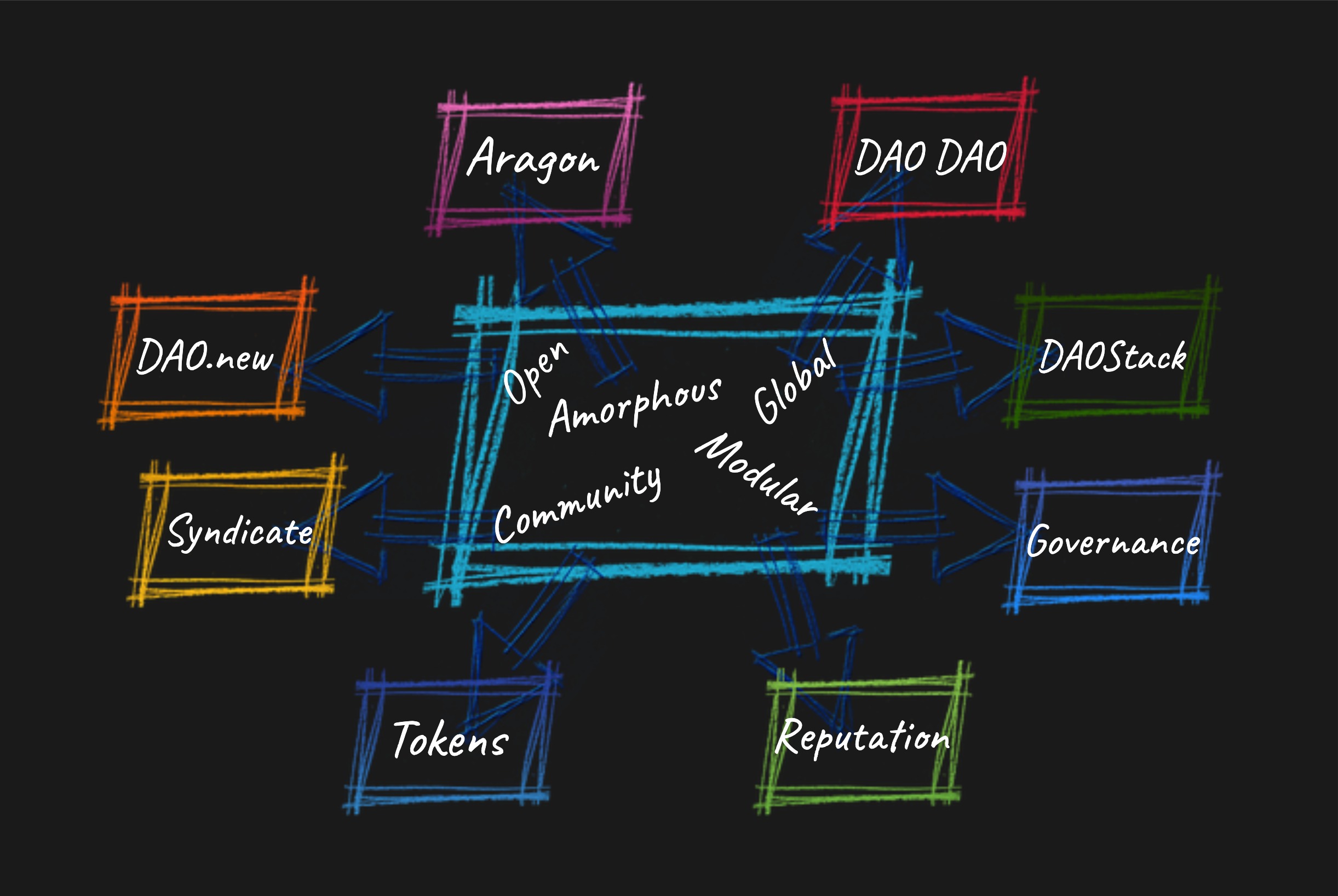
In the final installment of the series, I will finish with a look at a few of the applications used to build and launch a DAO, including Aragon and DAO DAO.
There are many applications that are used to build a DAO. Here I examine only two of the most popular ones, in detail. I also highlight a few others that are worthy contenders. They all share an important attribute: you do not have to know how to code to set-up a DAO. With a modular approach, the applications enable core features to be established quickly. Additional dApps that specialize in supporting DAOs are plentiful. Together, these features span the categories of community, governance, tokens, payments, teams, work streams, and communication.
Aragon
The Aragon application is easy-to-use and the user interface for creating a DAO revolves around a clear step-by-step process.
Many types of DAOs can be created with the provided templates, optimized for a specific purpose or structure:
- company
- membership
- reputation
- open enterprise
- dandelion
- fundraising.
Aragon also provides many resources including how-to guides, educational information, and a blog with really interesting articles. The documentation is provided for developers. Aragon has also partnered with experts who can consult in all aspects of DAO creation, development, and management. Aragon even operates the Aragon Network DAO with its own token, ANT.
Aragon supports multiple wallets and DAOs can operate on the mainnets of the following blockchains and Layer 2s: Ethereum, Polygon, Harmony One, and Metis Adromeda.
I have provided screenshots of the process to create a DAO below to illustrate the application’s powerful and user friendly features.

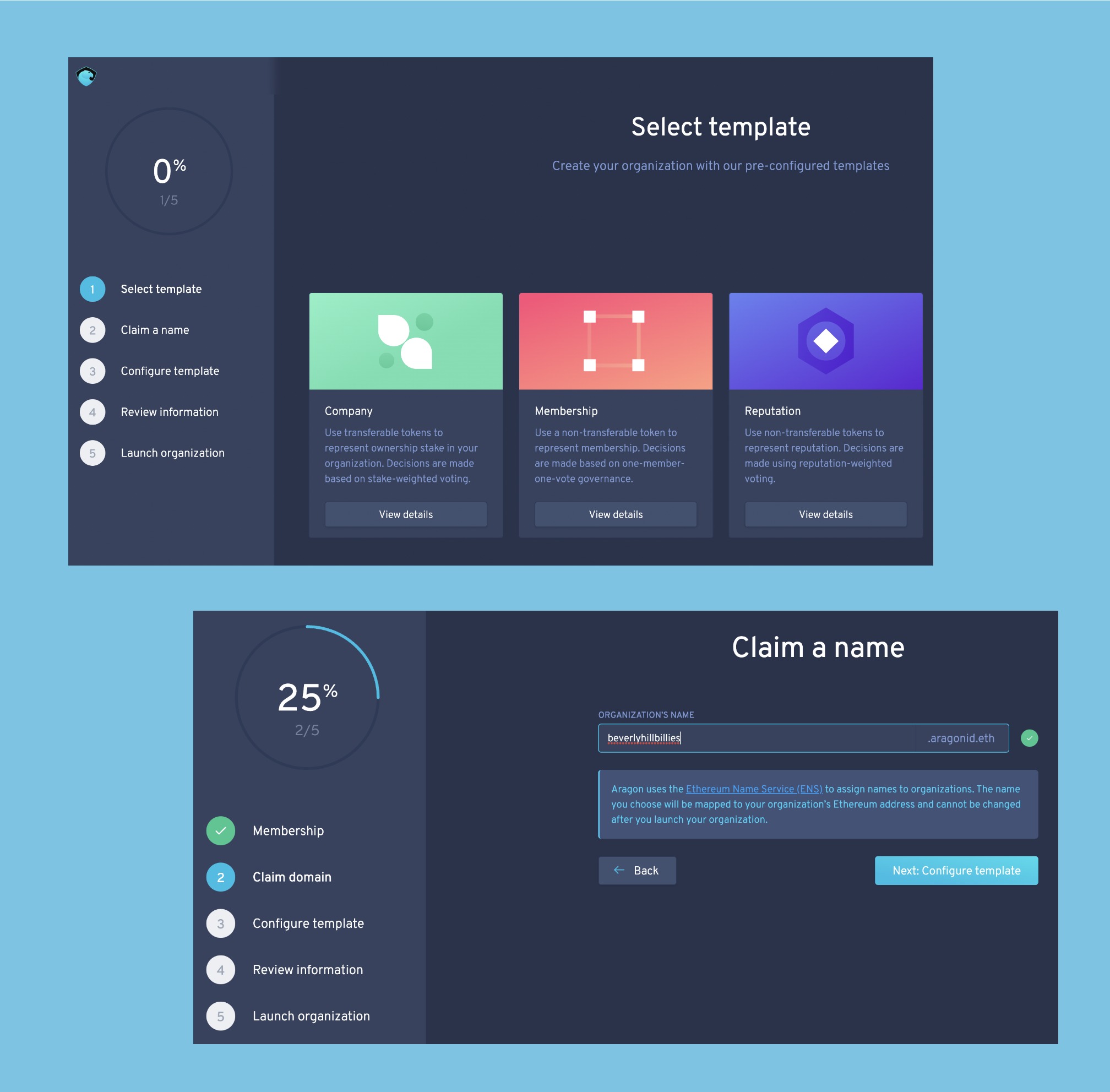
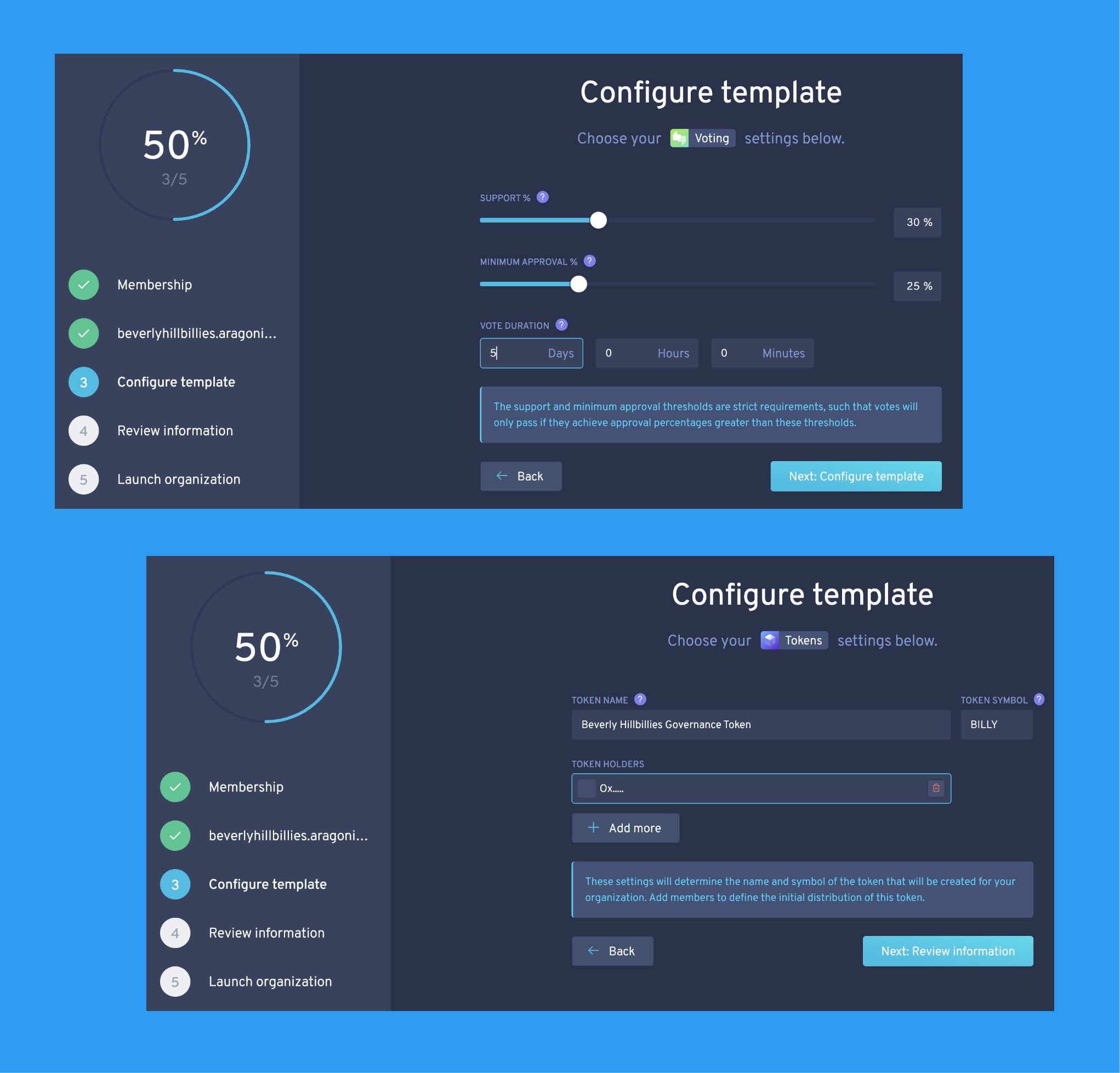
DAO DAO
As much as I try to spread my wings and warp across the greater universe of blockchains, I maintain my home base in the Cosmos. The experience is simply second to none, with excellent connectivity between the sovereign blockchains, low transaction fees, fast transaction processing, ease-of-use, a genuine excitement towards building new dApps, and vibrant, outspoken communities. Not surprisingly, DAO DAO is a pivotal dApp in the Cosmos and has quickly carved itself a niche when compared to other DAO creation tools.
Started as a prototype conceived at the first HackJuno, you can find DAO DAO on the Juno Network and it prides itself as being:
- inexpensive in set-up
- 100% on-chain
- flexible with governance options
- multi-sig capable
- token support ready
- permissionless tooling
- able to create subDAOs
- community funded
- itself a DAO.
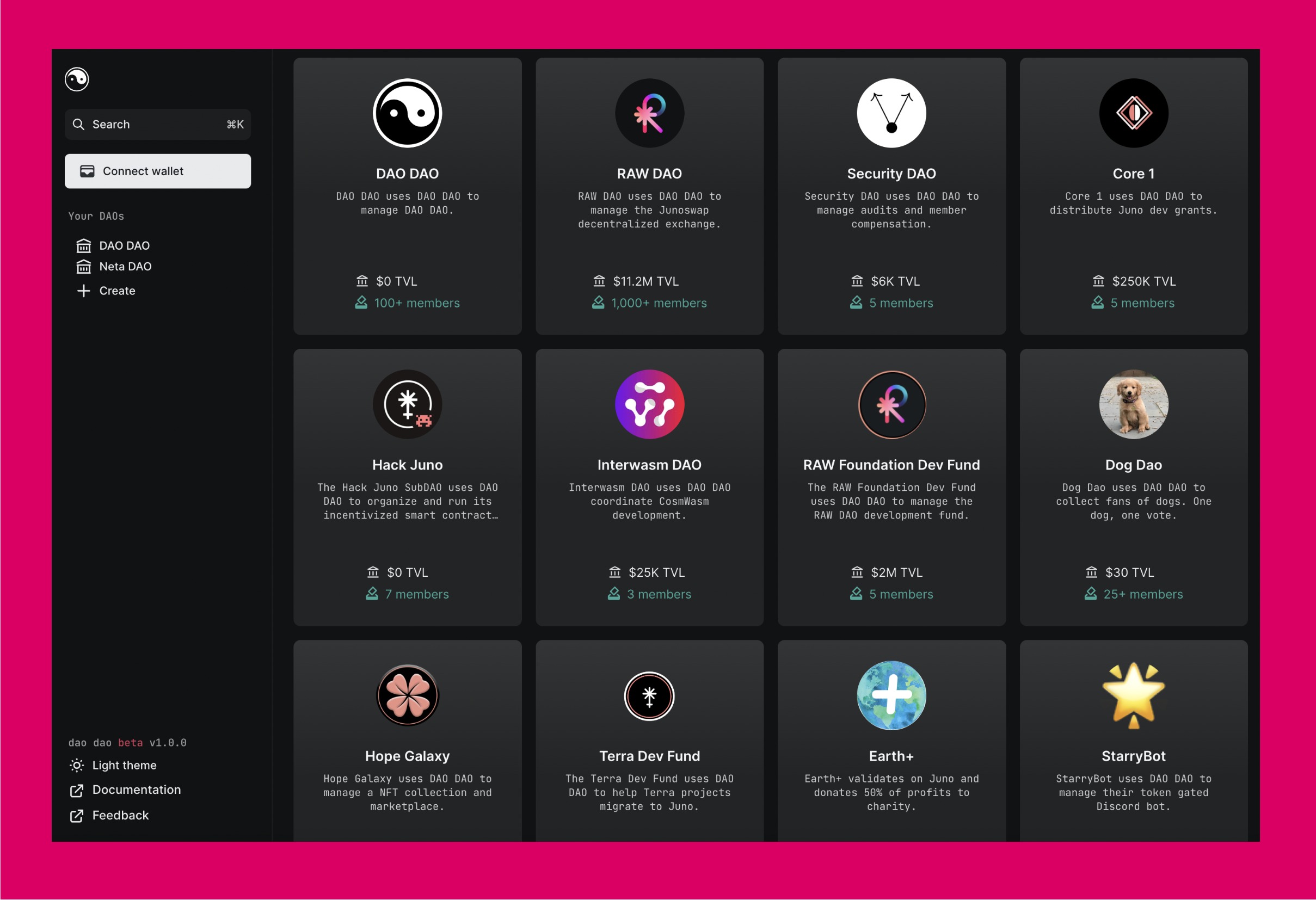
The Team has also published a constitution for DAO DAO and communicated that this document may serve as a guide or framework for other organizations to use in establishing their own constitution. The document is not only helpful, but also addresses many of the elements of establishing a DAO. I have left a link to the document in the Sources section below.
And that is not all. For starters, DAO DAO works seamlessly with the Keplr wallet, which is a powerful wallet for Web3 and used widely across the Cosmos. But, what really sets DAO DAO apart from the rest is the wealth of tooling already available on the Juno Network, which can be used to integrate into the plans for new DAOs wanting to form and launch on Juno. These include:
- JunoTools for creating and executing airdrops
- JunoMint for the smart contract deployment of a CW20 token
- JunoSwap for token liquidity, swaps, and AMM functionality
- (de)NS for decentralized naming registration and services.
New DAO founders have the backing of a vibrant community, in a bustling network with many new dApps being developed. Juno is part of a rapidly growing ecosystem of connected and interoperable blockchains in the Cosmos.
I have created two sample DAOs for demonstration purposes (see the pictures below). One is a membership style DAO and the other is an investment club.
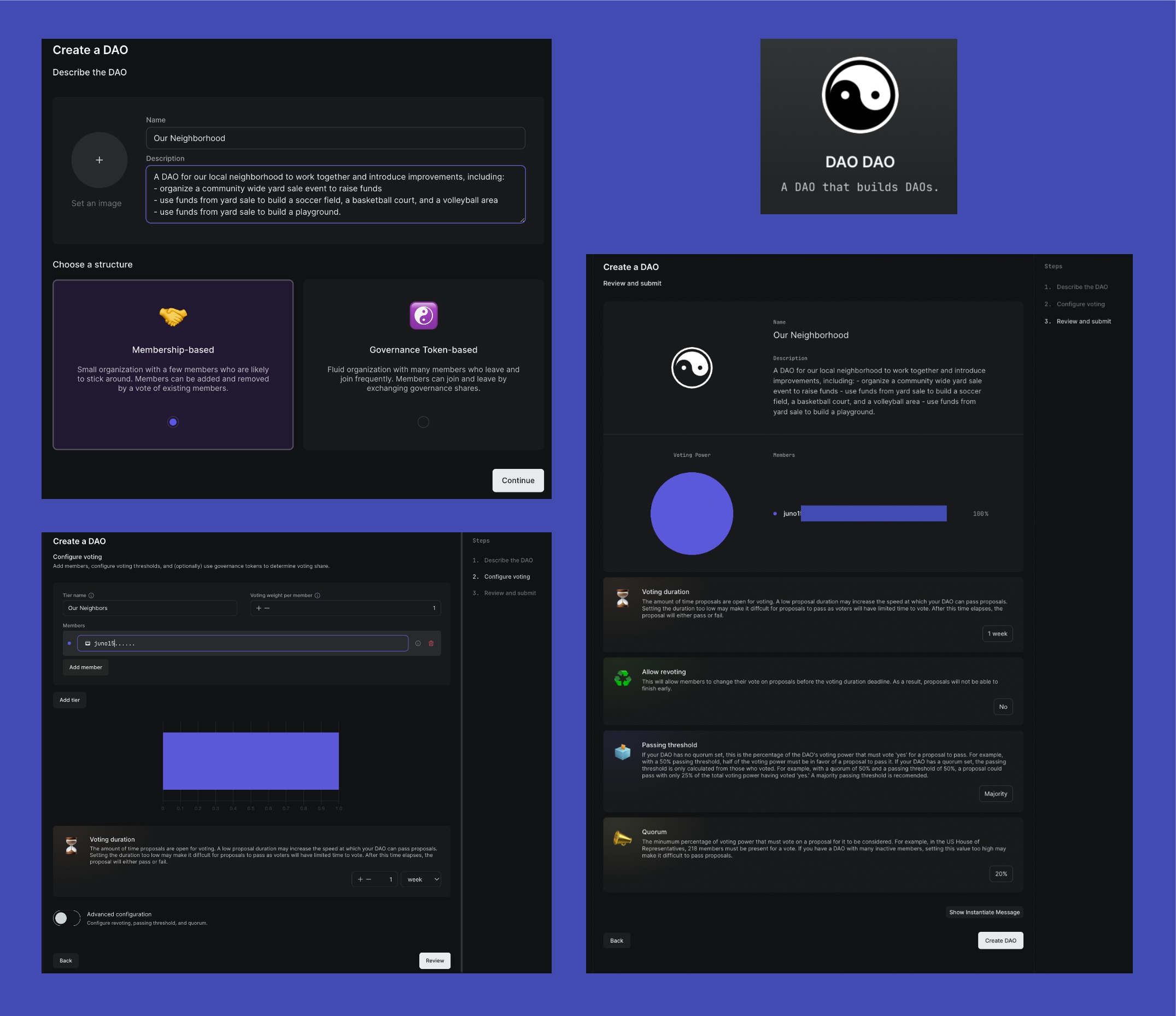
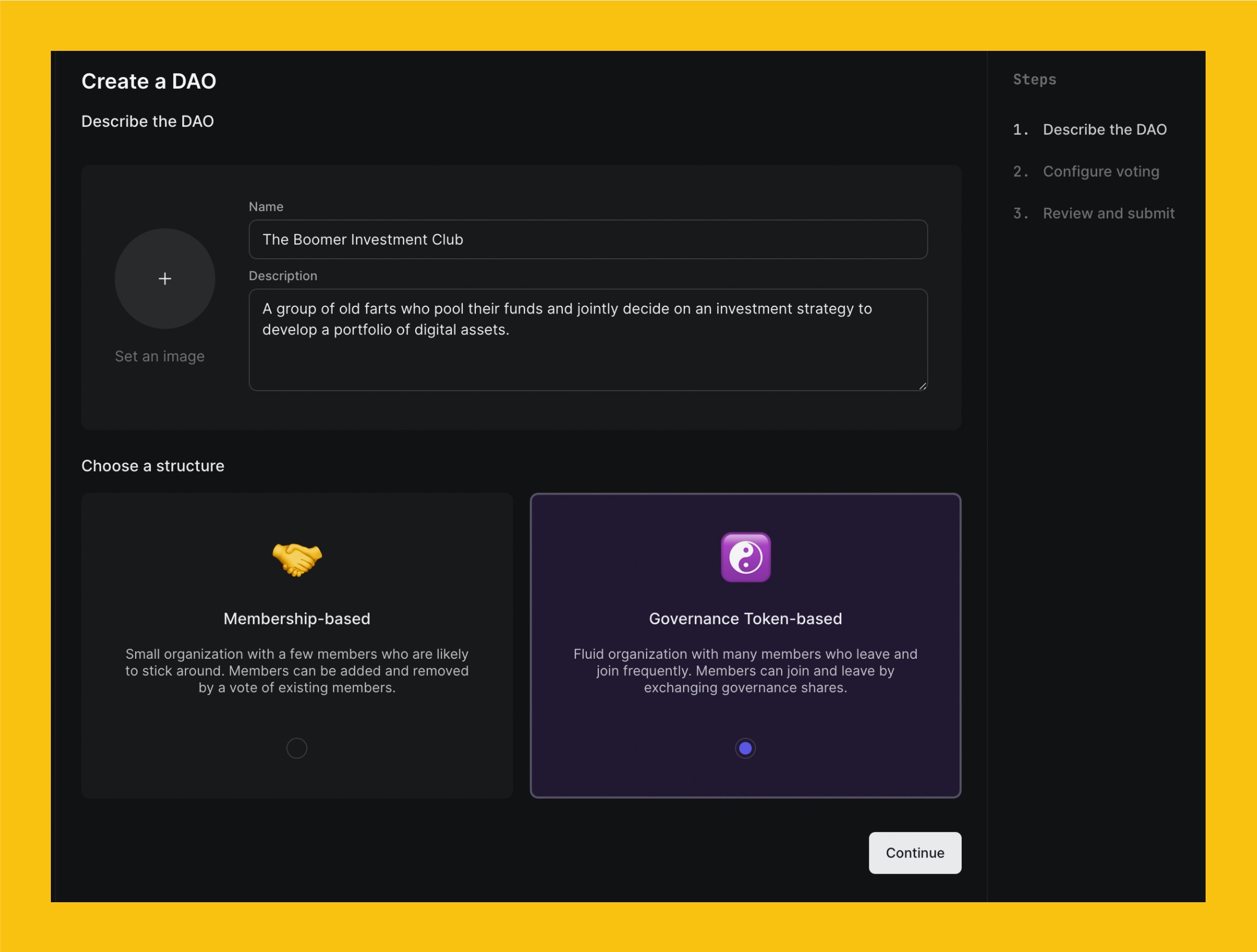
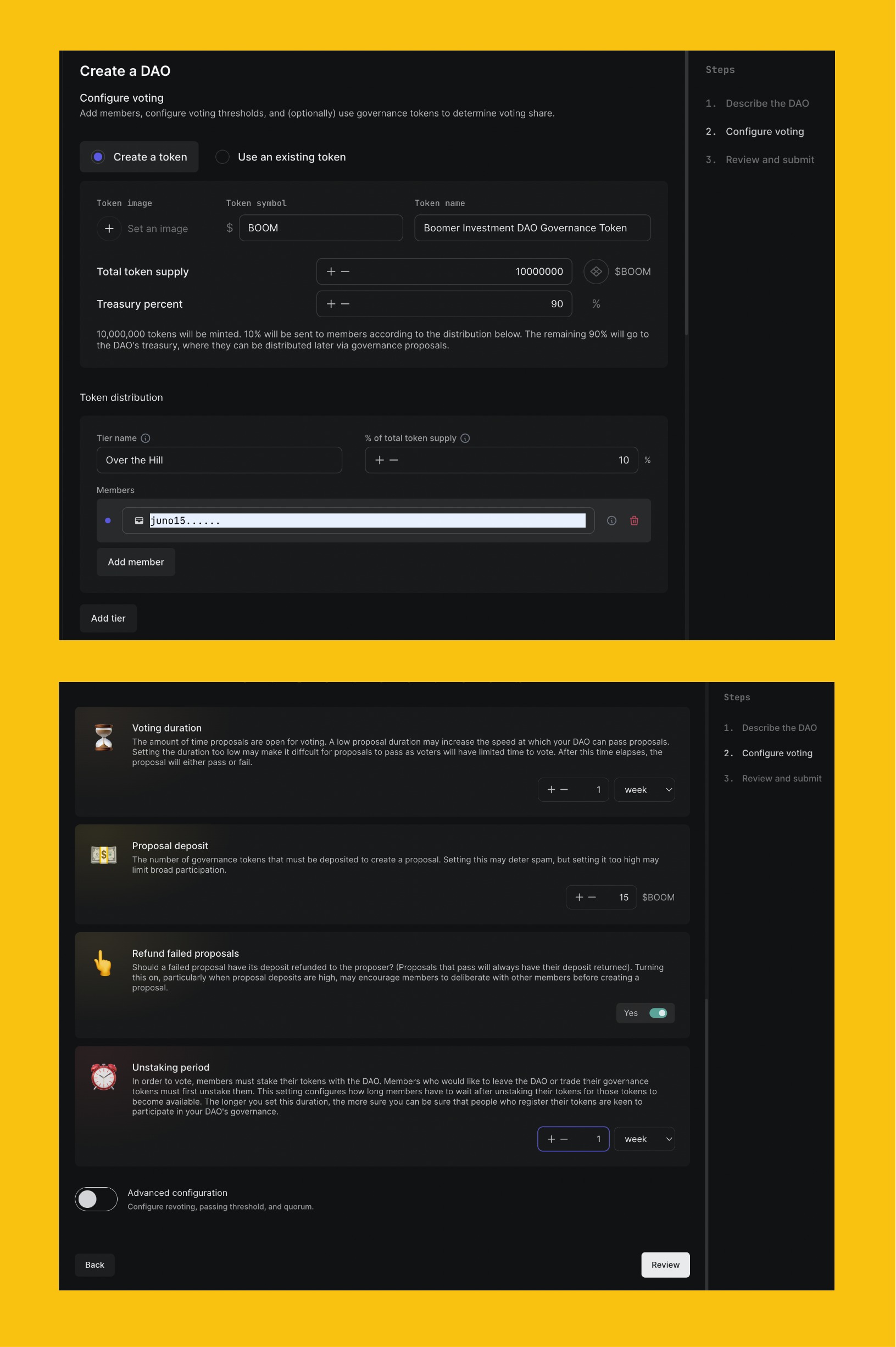
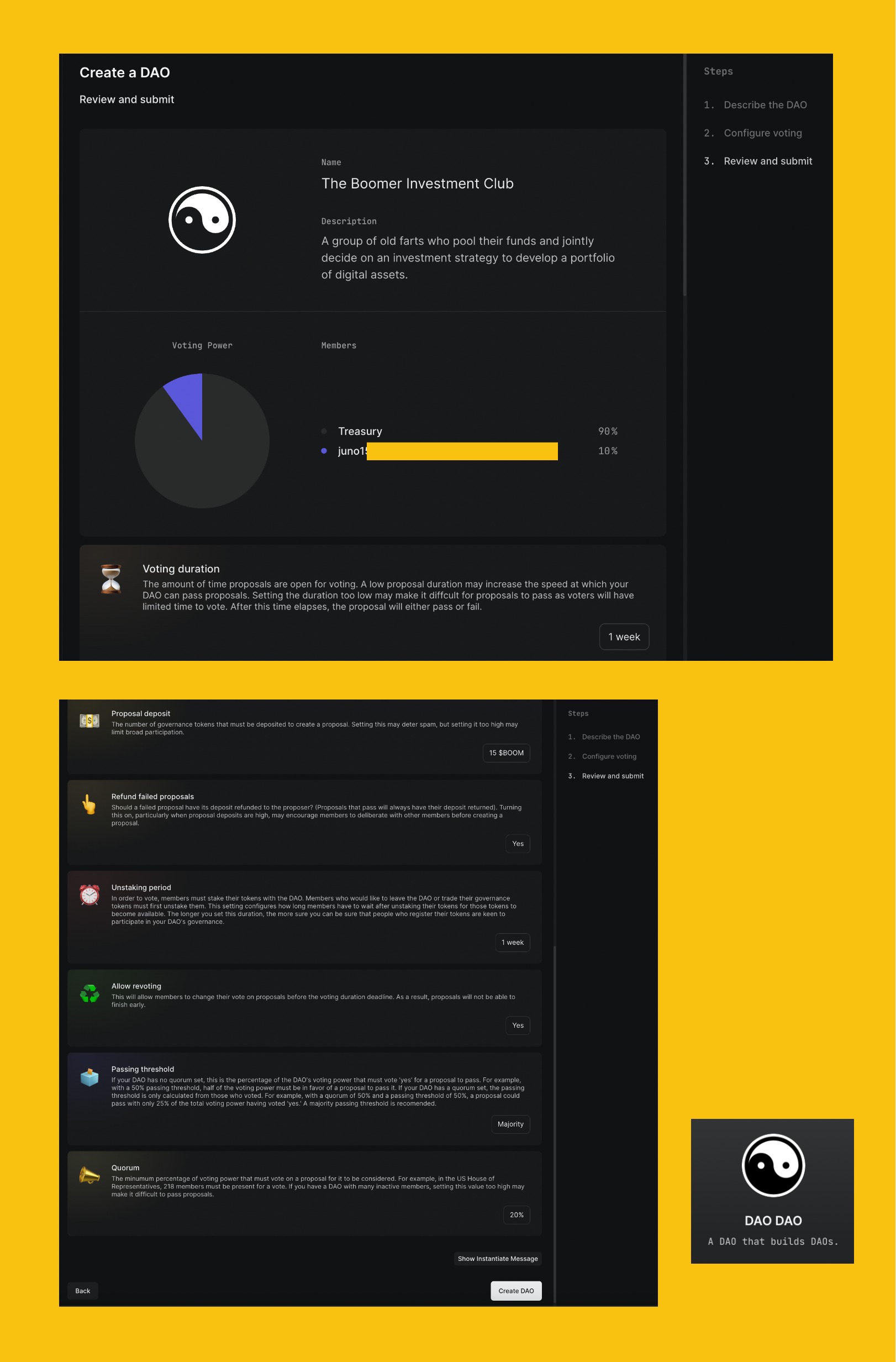
More DAO Applications
Other DAO builder applications include:
- DAO.new
- DAOStack
- Syndicate.
DAO.new is specialized for creating NFT DAOs on the Ethereum blockchain. DAOStack offers an easy-to-use form based app to create a DAO as well as an expert mode to quickly establish a DAO. Multiple use cases are available.
Syndicate is an application specialized for investment clubs. It includes the ability to establish a legal entity and create legal documentation, with EINs, tax forms, and compliance features. These DAOs allow for deposits from the members, which can be in the form of fungible tokens or NFTs. Both off-chain and on-chain integrations are supported.
All of these are for creating DAOs on the Ethereum blockchain (Mainnet) and primarily function with MetaMask wallets.
Many dApps and tools have already been developed to support DAOs, ranging from advanced governance systems to communications to payroll and treasury management. Messari provides an excellent list with links to all these tools (see the Sources section).
Blazing New Trails
So, is forming a DAO for your organization really a good or a bad idea?
At this time, I would definitely not operate a brick and mortar business, like a manufacturing company, a construction company, or a grocery store as a DAO. For example, established human resources, administrative, and compliance functions, such as payroll, health benefits, accounting, licensing, and tax reporting are yet to be fully developed effectively before they rival what is currently available for off-chain businesses. Governance is still evolving and current models would simply create slow and inefficient operating conditions for local, traditional businesses. I believe this would especially be evident at customer facing businesses and those companies operating with entry level employees.
Nevertheless, relative to what has already been accomplished with on-chain organizational development, these challenges seem trivial and I am sure more and more providers will bring solutions to market for DAOs.
However, the modern organizations that are shaping the technological landscape and defining the future of work in the twenty-first century are clearly well positioned to take advantage of what DAOs bring to the table. A group of highly skilled professionals, who are geographically dispersed across the globe, can join in a DAO to form a foundation of scalable growth through incentivized and autonomous teams. They can develop clearly defined work streams, all the while communicating consistently and effectively across multiple time zones.
As I pointed out in this three part series, there are still a lot of details to be worked out. Forming a DAO is not going to be an easy task: it will be chaotic at times, often messy, controversies will spring up, and adjustments will have to be made. But, if it was a cut and dry process, there would be no point in embarking on this rewarding and challenging journey!
De reis is net begonnen – Opa.
Sources, References, and Further Reading
Aragon - https://aragon.org/
DAO DAO - https://daodao.zone/
DAO DAO App - https://daodao.zone/home
Constitution for DAO DAO - https://daodao.zone/dao/juno10h0hc64jv006rr8qy0zhlu4jsxct8qwa0vtaleayh0ujz0zynf2s2r7v8q/proposals/A1
JunoTools - https://juno.tools/
JunoMint - https://junomint.com/
JunoSwap - https://junoswap.com/
(de)NS - https://dens.sh/
DAO.new - https://www.dao.new/
DAOstack - https://daostack.io/
Syndicate - https://syndicate.io/
Messari DAO Tools List - https://messari.io/governor/tools
You can find me here:
Twitter - @KaasKop_Opa
Medium - https://medium.com/@KaasKop_Opa
Loop - https://www.loop.markets/user/52879
Leo Finance - https://leofinance.io/@kaaskop

Posted Using LeoFinance Beta